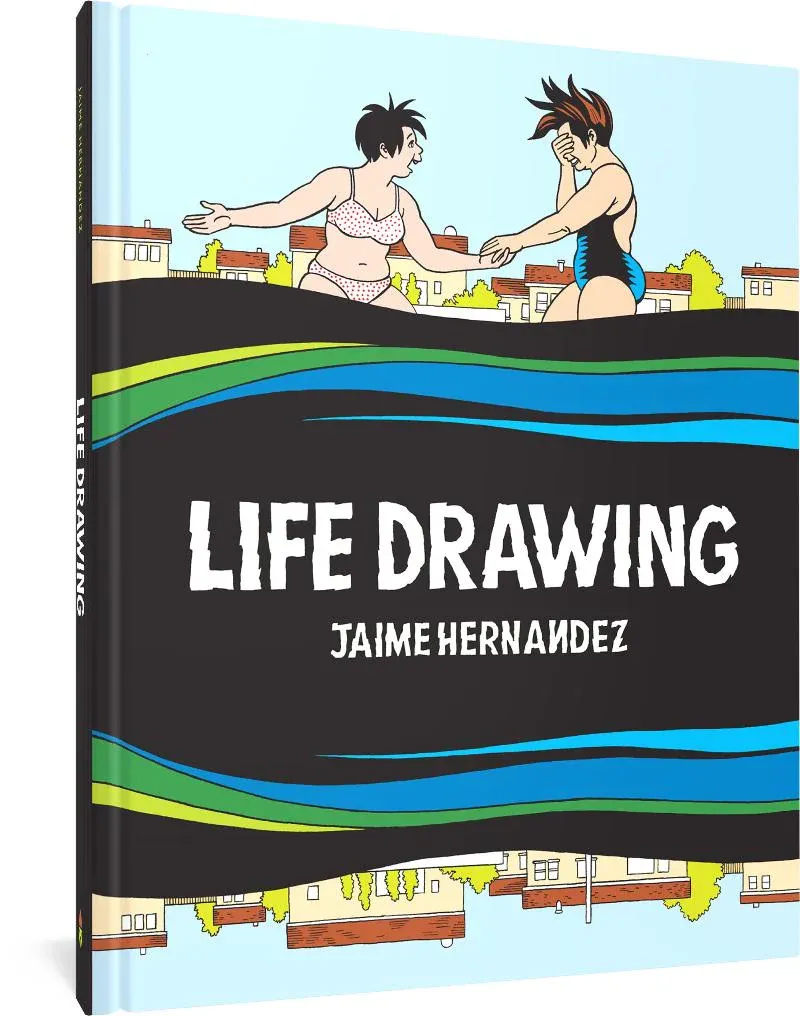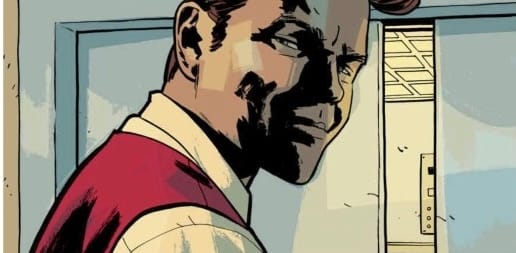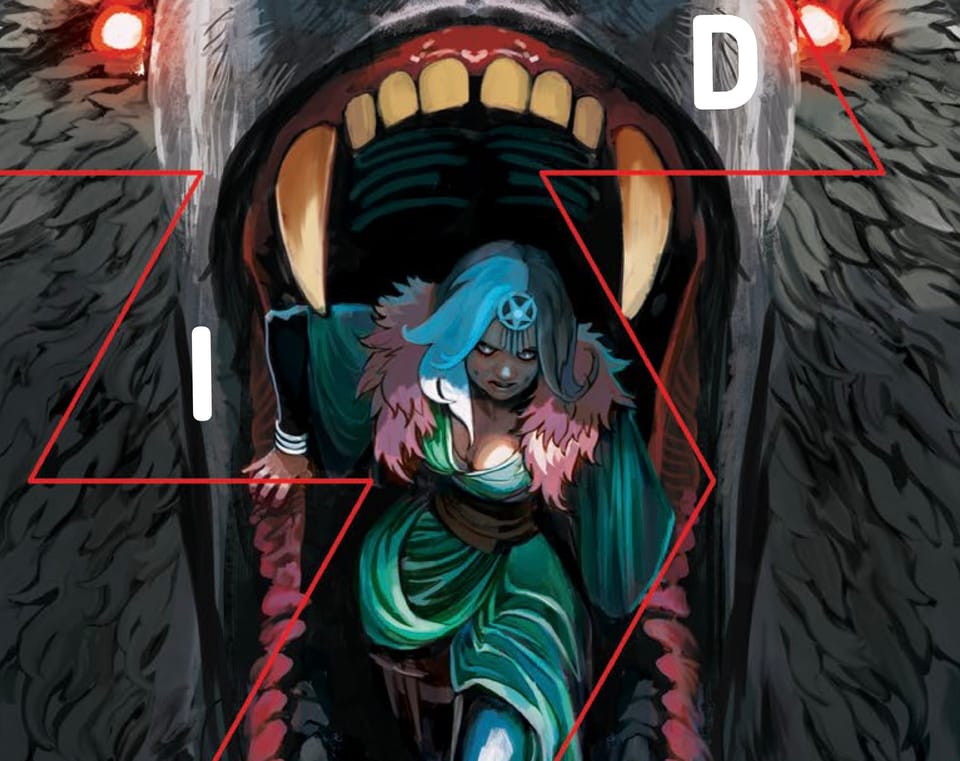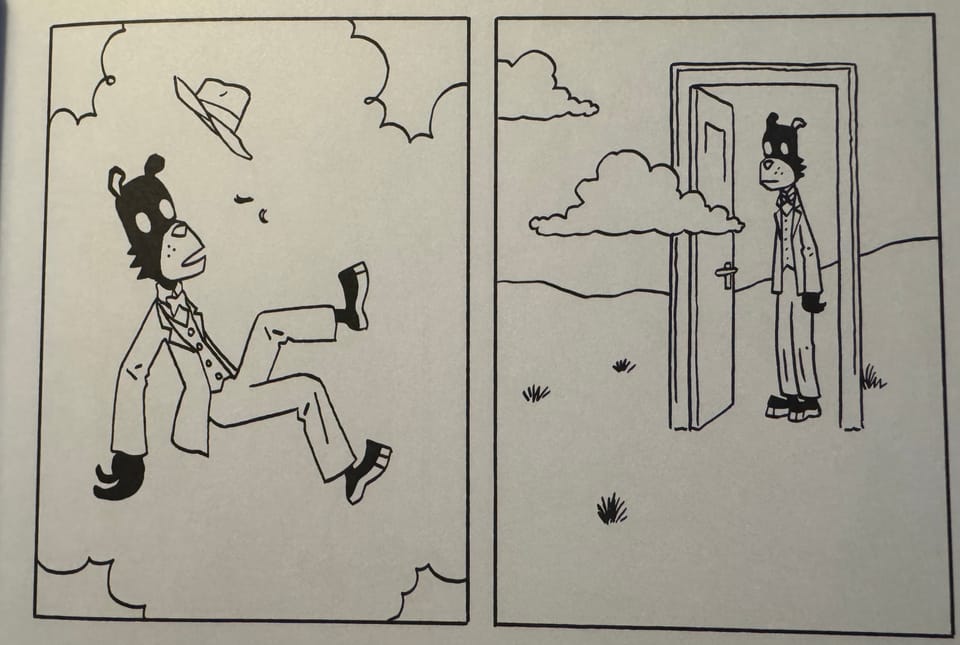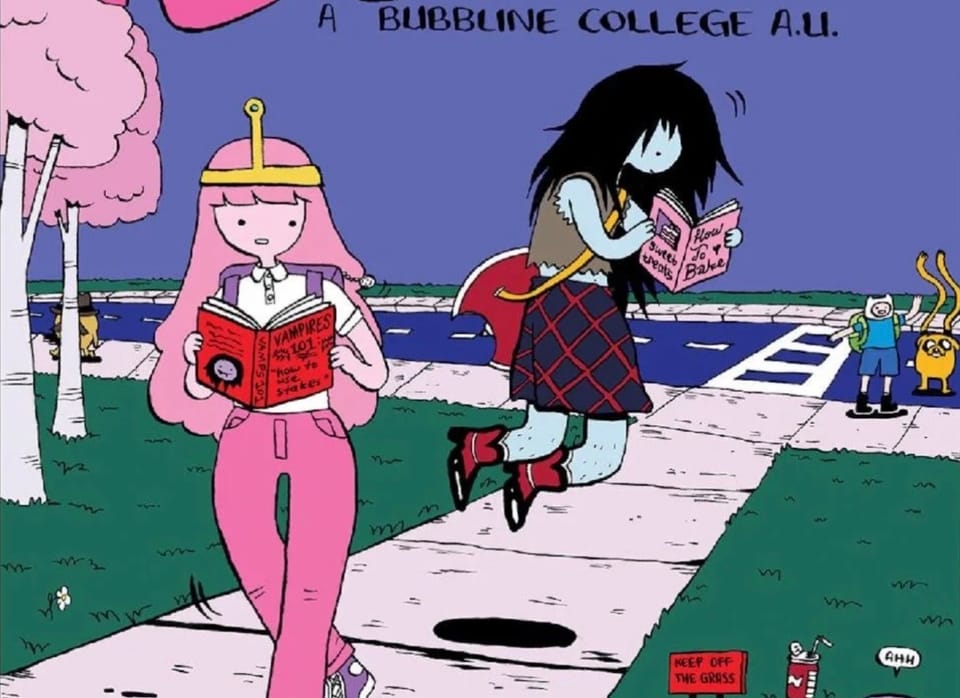Back in the Day, We Used To Be Punk — on Jaime Hernandez’s Life Drawings
Is this Love and Rockets: The Next Generation or the continuation of an ongoing story that started over 40 years ago?
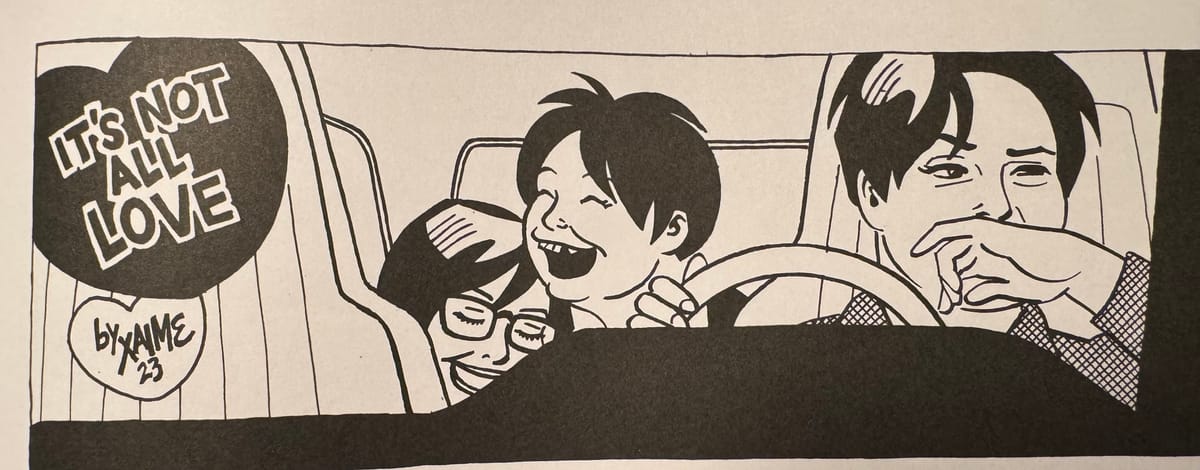
After many years of Gilbert Hernandez using his Love and Rockets pages to tell the multi-generational story of Palomar and its descendants, his brother Jaime appears to be following a bit in his path as teenager Tonta crosses path with Maggie and steps fully into the Locas stories (i.e. the Maggie and Hopey ones) in Jaime’s newest book, Life Drawing. Tonta is a mixed-up kid, the sister of Maggie’s ex/rival Vivian Solis (the Frogmouth) and their mother who may have killed a couple of her past husbands, including Tonta’s father. Because of that, she’s bounced around between her two older sisters, neither of whom are great role models for the young girl. Tonta has started to make friends at a new school but it’s the drawing class taught by Maggie’s longtime boyfriend Ray Dominguez where she finds a spark of life as she develops a crush on the teacher. And hey, Vivian once dated Ray as well. Welcome to the messed up world that Tonta lives in.
It’s not like Hernandez is moving on from Maggie and Hopey but he’s exploring more of the world around them. Tonta is the bull in the China shop when it comes to how she reacts to anyone who isn’t family. The first time she meets Maggie outside of drawing class, she accuses Maggie of stealing a summer hat that Tonta gave to a second-hand store and she wants it back. Tonta and her protective friend Judy Fair assault this poor woman who’s sitting on the lawn, just trying to read a book under a hat that she bought. But Tonta’s anger shifts into this truly frightening gear as she tries to bully Maggie to give her the hat. “… and then all of a sudden, I’m being threatened by these two teenage gun molls all because they thought I stole their stupid fucking beach hat…!” Maggie tells Hopey over the phone later on. It’s easy to see that for Tonta, this was an attempt to control her environment the way that she’s seen her sisters try to do and poor Maggie just happened to be in Tonta’s way.
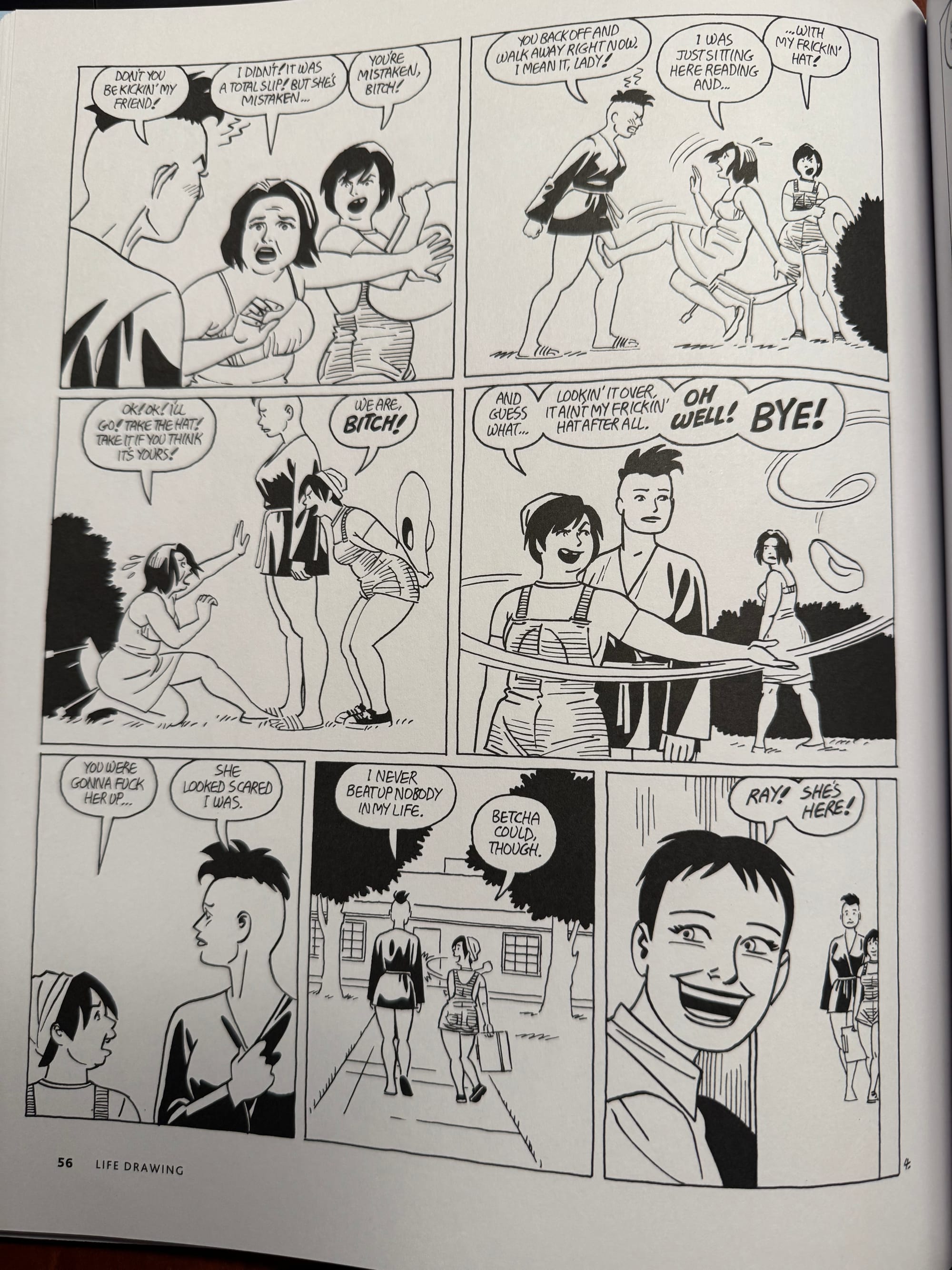
From that first encounter though develops a really sweet friendship between Maggie and Tonta. For Tonta, it’s shifting a bit of her crush from Ray to Maggie but for Maggie, it’s being able to be protective of Tonta in a maternal way. She sees it as an older sister/younger sister relationship, but much healthier than Tonta’s relationship with her real sisters. On one level, you could see this story as the new generation (Tonta, Judy Fair, and their other friends) taking over the story and there is some truth there. But a lot of it is just Hernandez’s flair for character; no one is ever a bit character in a Jaime Hernandez story. So Tonta, Judy, and all the rest get real personalities and development whenever they show up on the page. Hernandez has always had these kinds of characters around Maggie and Hopey, ones who are deep enough to be the main characters in their own stories (such as Penny Century) but who are so tied into Maggie’s overarching narrative that they can’t help but be supporting characters. It’s ultimately Maggie’s story but there’s room for other rich characters around her to have their time to flourish.
But Tonta is so much more than just a supporting character in someone else’s life and maybe, just maybe, she’s the new center of Hernandez’s comics; the new focus of the Locas cycle. It’s still a bit too early to tell. Whether this is a reorienting of his comics or just a different turn in Maggie’s life, Hernandez’s storytelling still feels like the continuing adventures of this area of Southern California that he chronicling for over 40 years. It’s just the continuing life of these stories. It seems fairly effortless on his part to just move in this direction but after The Love Bunglers, it just felt like a certain era of Maggie’s life had closed. What was there left to tell in the multi-decade ballad that was Maggie’s life? That’s not to say that there aren’t stories still there but Maggie exhibited a sense of stability in life that had never been there before. There are still some weird things happening (the Frogmouth getting married and essentially becoming part of the family) but Maggie had grown up. Maybe the Love and Rockets stories should be about growing up and not about being grown up. Enter Tonta and her friends.
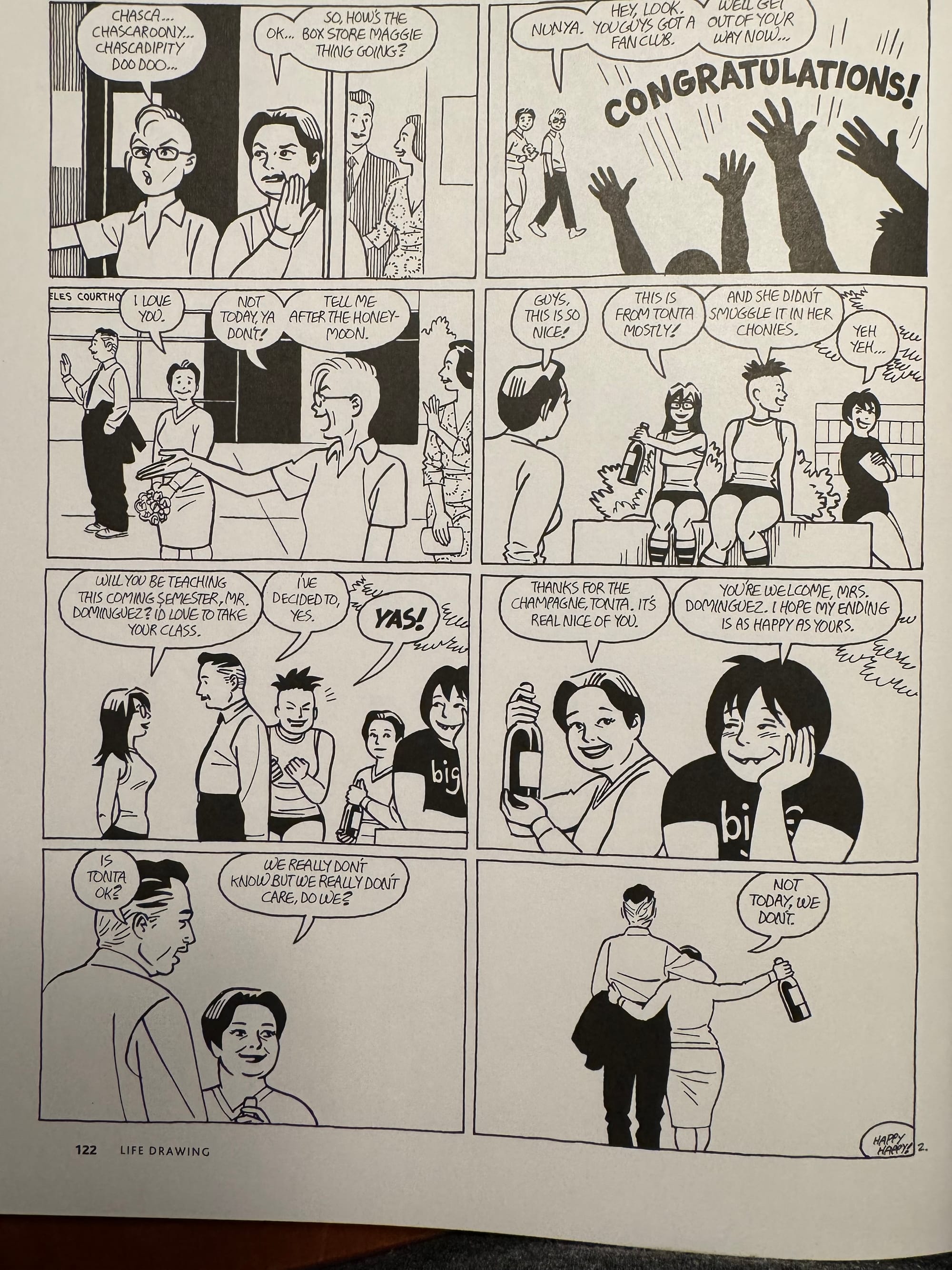
After 40 years of telling these stories, there’s an ease to Hernandez’s artwork. His lines and his drawings appear effortless as they tell these gripping and often crushing stories. Every line in every panel is part of the story, establishing the tone of the scene. The artist Jaime doesn’t get in the way of Jaime, the storyteller. No mark on the page is wasted because Hernandez is so focused on the story. In the recently released Love and Rockets #16, Jaime’s contribution is his sci-fi story “Animus” and in that story, we see the artist having fun with his story, leading the story more than in Life Drawing where the storyteller is leading the artist. Both are pure but in “Animus,” Hernandez’s drawings lean heavily on the spectacle whereas in Life Drawing, the art is about the characters and their acting, the ways that they bring the story to life.
When he’s in this mode of storytelling, his focus is on the characters, their weight, their movement, and their relationships in the space they occupy. That’s why we fell in love with Maggie and Hopey all those years ago and that’s why we learn to care for Tonta and her friends. You have a character like Vivian, who is this wall of anger and jealousy. She’s been a foil for Maggie in the past. In many ways, she’s the villain tormenting both Maggie and Tonta. But Hernandez draws out of her a vulnerability that can pop up now and again. In this book, he uses Vivian sparingly but when she’s on the page, she commands your attention like almost no other character does. It’s like she’s not of this world so when she shows up, you can’t help but be mesmerized by her presence. And Hernandez somehow pulls this off without obviously calling attention to what he’s doing. You only realize it afterward.
After forty years, we know these characters. We know Maggie, Hopey, and Ray; what more is there to learn about them? Jaime Hernandez’s Life Drawings shows us that he has so much more to do with these characters and the city they live in. There’s always some new damaged soul that can get pulled in by Maggie’s unexplainable gravity. And there’s something about those souls that gets to Maggie. Years ago, we saw it with Vivian and now we’re seeing it with her sister Tonta. A way to read both Jaime and Gilbert’s work is to see that life moves on. There’s no such thing as staying static in these comics; there’s always someone new to turn up and turn the world upside down.
